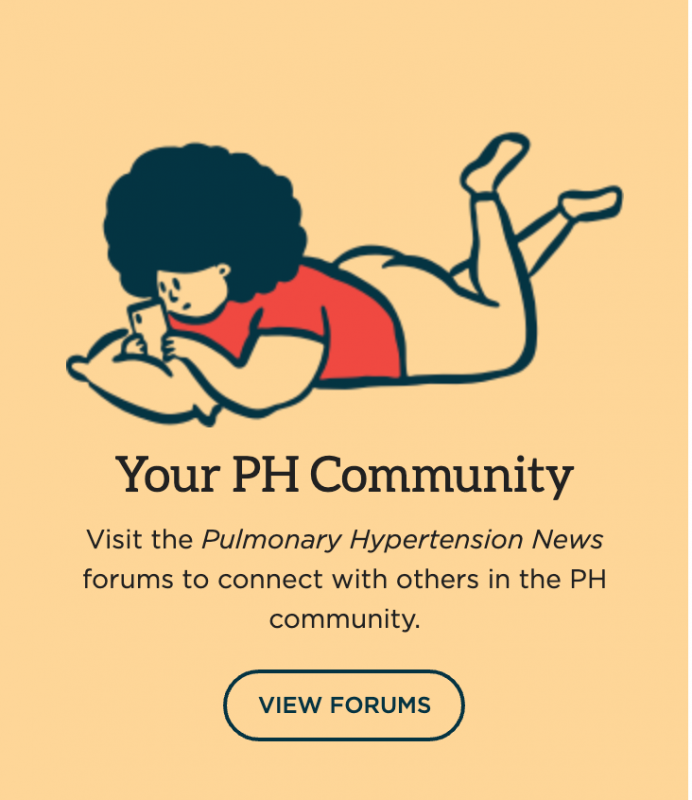PAH treatments effective in patients with repaired heart defect
Risk of complications, mortality reduced by half in adults, teens with CHD

Treatments approved for pulmonary arterial hypertension (PAH) may reduce by half the risk of serious complications or death in adults and adolescents who also have repaired congenital heart disease (CHD), pooled data analysis of three clinical trials shows.
This risk was similarly reduced among the whole PAH patient population who participated in the trials and given either Uptravi (selexipag), Opsumit (macitentan), or Tracleer (bosentan). All three therapies are marketed by Johnson & Johnson, which funded the analysis.
“This pooled analysis provides important evidence to guide medical management in this patient population,” the researchers wrote. The findings were described in the study “Outcomes in Patients Receiving Treatment for Pulmonary Arterial Hypertension Associated With Repaired Congenital Heart Disease,” which was published in JACC: Advances.
PAH occurs due to a narrowing of the pulmonary arteries, the blood vessels that supply the lungs. This causes blood to travel under higher pressure than normal, making it more difficult for the right side of the heart to pump blood to the lungs. This can lead to shortness of breath and other symptoms.
People with CHD, a problem with how the heart forms before birth, are at risk of PAH and those who develop it after a surgical repair may have a worse outlook. There’s little evidence about how well approved PAH treatments work for patients with repaired CHD. Here, researchers at Johnson & Johnson and several international institutes explored whether patients with repaired CHD-associated PAH (CHD-PAH) may benefit from such treatments.
Benefit of PAH treatments on repaired CHD
They pooled data from three placebo-controlled clinical trials: the Phase 3 GRIPHON (NCT01106014) that tested Uptravi, the Phase 3 SERAPHIN (NCT00660179) of Opsumit, and the Phase 4 COMPASS-2 (NCT00303459) that tested Tracleer.
A total of 1,982 people, 12 years and older, with PAH made up the whole patient population. Fewer than 1 in 10 (8.9%) had repaired CHD-PAH. The most common CHD was an atrial septal defect, wherein a hole allows blood to flow between the two top chambers of the heart.
More than three-quarters of the patients in the overall PAH and repaired CHD-PAH groups were female. A similar proportion of patients were given treatment compared with those on a placebo (49.2% vs. 50.8%). For those assigned one of the therapies, mean age at enrollment was lower for repaired CHD-PAH patients relative to the whole PAH population (41 vs. 48).
The main goal of the analysis was to measure the time until the first confirmed death or serious complications, including disease progression or PAH worsening leading to hospitalization, long-term oxygen therapy, a lung transplant, or atrial septostomy, which is a surgical procedure to reduce strain on the heart’s right side.
Death and serious complications were less frequent among patients given active treatment over those on a placebo (31% vs. 44%), with active treatment significantly reducing the risk of such events by 37% in the whole PAH patient population. The same was observed among patients with repaired CHD-PAH (17% vs. 31%), where active treatment was significantly associated with a 50% lower risk.
PAH treatment was superior to a placebo at improving patients’ functional capacity in the six-minute walk test, easing shortness of breath, and slowing the increase in NT-proBNP, a blood marker of heart train, an analysis of secondary measures showed
While the magnitude of treatment effect was generally similar between the whole PAH and repaired CD-PAH groups, differences relative to placebo reached statistical significance only in the whole PAH patient population.
“Treatment with approved PAH drugs provided a similar reduction in [mortality/morbidity] risk in patients with repaired CHD-PAH when compared with the overall PAH population,” wrote the researchers, who said more studies are needed to know if “improvements in clinical and functional parameters accompany the significant reduction in the risk of [mortality/morbidity] achieved with PAH treatment in patients with CHD-PAH.”








